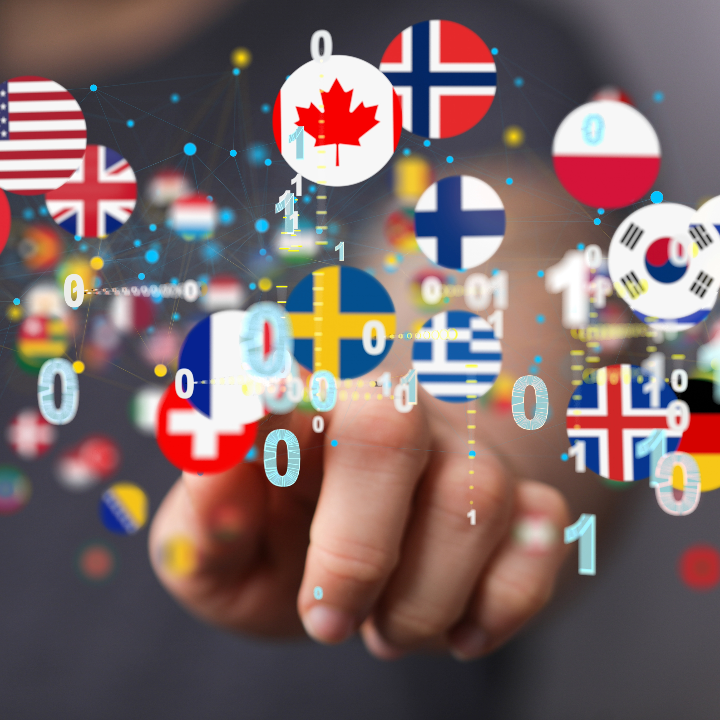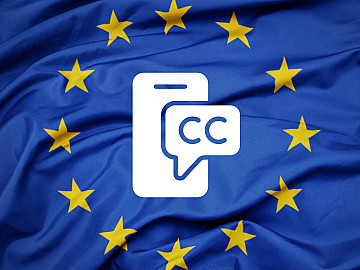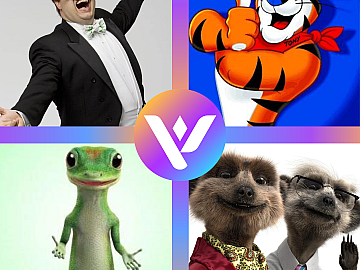Dubbing content is a fantastic way to bring your media to an international stage, potentially growing your audience exponentially, but which languages should you invest in?
Altogether, there are about 7,117 known languages spoken around the world. Yikes, that’s a lot of choices. But don’t worry. Not all of these options are going to advance your content’s popularity in a meaningful way.
The top dubbing languages are the ones that help you achieve your goals. Whether that’s increasing views or converting into sales, acting with a localisation strategy is key.
With so many options, how do you pick the right one? Well, it may be less straightforward than you think. It’s not enough to just pick the most commonly spoken languages and call it a day.
After all, you are trying to increase your return on investment; carefully selecting the language based on the audience’s likelihood to align with your goals is what it’s all about. Basically, who is going to have a lasting connection with your content, and what language do they speak?
Let’s break it down.
Skip the guesswork! Contact Voquent’s team to plan your localisation strategy and get advice on the top dubbing languages for your project.
Getting started with dubbing
Localising media and attracting foreign-speaking audiences is far from the only thing to consider. It doesn’t matter how impressive your translations are if there is no demand for your type of content. High-quality translations, dubbing, and impeccable audio in the right languages are absolutely crucial.
Step one: Identify which language dubs best fit your content.
So, let’s look at the top options for most channels.

How to pick the right languages – Is Bigger Better?
It can be tempting just to start translating your content into the world’s most spoken languages – Makes sense, right?
It’s a bit more complicated than that. Just because billions speak a language doesn’t mean those same people are watching content.
For example, let’s say you are looking to dub your YouTube comedy sketches.

The goal is to increase viewership numbers to enhance revenue. So, surely Mandarin is the most obvious choice?
While Mandarin is the world’s second most popular language, with a whopping 955 million speakers, it’s not guaranteed to be a surefire hit as a top dubbing language. In essence, not many of these people are watching YouTube.
China, the country with the most Mandarin speakers, famously has its social media platforms, with Youku being a more popular video-sharing website for Mandarin speakers than YouTube.
The country’s content censures are designed to restrict external web use. Attempting to run YouTube content for Chinese audiences would restrict your viewership to the pool of users with VPNs – a slither of the population, comparatively – regardless of the massive Mandarin-speaking market.
Whereas YouTube’s immense popularity in Brazil has led to Portuguese being the third most popular language on the site. With over 8% of all content being in Portuguese.
So, even though the world’s most popular language list may look like this:
- English
- Mandarin
- Hindi
- Spanish
- French
- Arabic
On the other hand, the most popular languages for YouTube viewership look more like this:
- English
- Spanish
- Portuguese
- Hindi
- Korean
- Japanese
But even then, it’s not enough to simply hit the most popular languages. You need to make your audience match your content.
How to reach the right audience
Movies, TV, and Entertainment categories are among the fastest growing on YouTube. But what is considered “entertaining” will differ depending on the culture you grew up in.

For instance, research shows that audiences in India, the US and Brazil favour comedy content and spend much time online watching funny videos. Conversely, French, Korean, and Japanese do not connect with this genre to the same degree.
Comedic content designed for English speakers in the US could be perfectly positioned for translation and deployment to Brazilian audiences – as there is overlap with the type of content these markets enjoy. This could indicate that Portuguese is a top dubbing language for comedy content.
But even then, humour is famously subjective – so comedy and what audiences find funny will depend on where they live and, by extension, the language they speak.
Professional Transcreation
Sometimes, translating media isn’t a matter of just replacing words and sentences with an equivalent version in the target language. Cultural considerations must be taken into account to bypass censorship laws and comfortably conform to the expected morality of a target nation.
This is what transcreation is all about: editing content to do more than just translate the words but adapting the message for maximum intended impact in foreign countries. To take this further, some phrases and terminology don’t always have a direct, one-to-one translation, either.
Untranslatable Terminology
For example, the Japanese term “mono no aware” is a beautiful phrase that bridges nostalgia and melancholy – it refers to the tender understanding that all things happen and pass without clear resolution.
However, in English, it directly translates to something like “the pity of things” – which makes very little sense to common English viewers and fails to capture the neutrality of the phrase. Even getting the general gist of the idea isn’t really quite representative of what it means.

Mono no Oware; the Cherry Blossom Trees bloom only once a year
It can be hard to understand because it is so wrapped up in Japanese culture; as cherry blossoms bloom for no longer than 2 weeks out of a year, a comprehension of mono no aware is commonplace to Japanese audiences.
In essence, it is crucial for dubbing providers to be experienced with both the source and target languages for the best results. After all, that funny, relatable slice-of-life skit that is killing it with your audience may be funny and relatable to viewers in your own country, but that slice may not reflect the life of someone on the other side of the world – so it could miss the mark if you dub into a language without making appropriate transcreation efforts.
An unskilled or AI-powered translation is guaranteed to fail in reworking this term for international audiences. Only genuine experts in the source and target languages would be able to pick up on the subtleties of cultural nuances in different languages.
Getting the Dub Recorded (AI vs. the real deal)
Now for translation and dubbing, there is no doubt the use of AI may come into the picture. One of the primary reasons many use or consider using AI is cost. Facts are facts, AI services are normally cheaper than human ones. AI programs can be more friendly on most budgets but always at the cost of quality and nuance. Real voice actors can capture the essence of your content, ensuring that emotions and cultural context are accurately conveyed.
Despite the initial investment being cheaper, the chances are that AI is costing you in other ways. Any cost sunken on a cheap, poorly dubbed video is lost, as viewers will not connect or convert on your media. Whereas, quality human-centric dubbing with technological assistance is going to be a surefire hit with the right audience.

You may think that AI dubbing is a quick and easy way to jump on the Multi-language audio track train.
But, competition is fierce in international markets. Using an AI dub is nowhere near sophisticated enough to realistically dub multiple voices in a video, and AI will never provide the same quality as a human voice actor.
You don’t always need the top languages.
Now while choosing the top spoken languages can be the best-sounding option for targeting a large viewership, it may not always be the most efficient strategy.
Competition and Saturation: Top-spoken languages often have a higher level of competition. Many content creators target these languages, leading to a saturated market. Standing out in such a competitive landscape can be challenging, especially for new or smaller channels.
Niche Audiences: Some languages might not be among the top spoken languages globally, but they can have a highly engaged and enthusiastic audience for specific niches. By targeting these languages, you might tap into a less competitive market that has a higher conversion rate due to its focused interest.
Cultural Relevance: Different regions and countries have distinct cultural contexts and preferences. By choosing languages that are more relevant to specific regions, you can tailor your content to resonate better with those audiences. Cultural nuances and references might not translate well into the top spoken languages.
A good example of localisation would be if your Spanish videos are popular in South America, Portuguese localisation will allow Brazilians to understand and engage with your content too.
So the exact top dubbing languages are going to vary based on the type of content you’re looking to localise. Gauging the perfect potential audience and getting to work can be a struggle without experience in a new target market, fortunately, Voquent is ideally positioned to be your partner in growing your video content internationally.
If you want advice on how to maximise your dubbing strategy and chart your success, reach out to our team and get a quick, easy, no-obligation quote for your content or review of your channel.
Discover Localisation Services
Learn How to Grow Your YouTube Channel
Sometimes we include links to online retail stores such as Amazon. As an Amazon Associate, if you click on a link and make a
purchase, we may receive a small commission at no additional cost to you.


















